The Breakdown: Ploy on how he produced the rising synth tones in Garys
Ploy opens up his DAW to show us how he made a gloriously leftfield club banger
Over the course of the past decade, Ploy – real name Sam Smith – has carved out a reputation for himself as one of the most innovative artists in the UK underground.
His club-centric sound, which combines elements of dark British techno with numerous global percussive diversions has seen him land on lauded labels like Hessle Audio, Hemlock, Timedance and L.I.E.S.
Following the Covid period, he’s recently returned with a new label and party series, both named Deaf Test. The label launched late last year with Ploy’s own Bollywood-sampling Rayhana EP. To mark the occasion, we visited his South London studio…
Why did you choose to launch your own label now?
“It was just to set up my own platform, really, so I could have full control. You reach a point where you do stuff for other labels – they’re good springboards, especially when you’re getting established, as they push you further, which is what you need at the start – but after a while you come to the conclusion that you can do all this yourself and have full creative control. I’m a bit more established now, so I just wanted that foundation to build my own thing on, rather than always being associated with someone else’s label.”
Deaf Test is also the name of a club night you’ve been running recently…
“Yeah, I’m doing a party with the same name. They started in 2021. This was all pandemic thinking, basically. It’s all stuff that I’d always known I’d wanted to do in the future, but I wouldn’t have got around to it because I’ve always been so busy with gigs and stuff. But because everything slowed down it gave me a chance to work this stuff out. I wanted to go back into normality with some sort of plan.”
Get the MusicRadar Newsletter
Want all the hottest music and gear news, reviews, deals, features and more, direct to your inbox? Sign up here.
Is there any specific thinking around who you put on at those nights?
“I just wanted to push a very particular sound and aesthetic that represents all of my interests. That’s a similar ethos to the label too, basically. It’s about drawing on influences I feel are a little underrepresented, and trying to make it more coherent.”
Do you plan on using the label as a platform for other artists then?
“I haven’t got that far yet, right now I’ve just got a lot of material from me that’s ready to go. But I do want to do a collaborative project too, which will involve pushing out of dance music a little bit more and working with other artists – vocalists, instrumentalists, other producers – to do another album-sized thing. After the next record that’s what I’ll be working on. But after that, it depends, I guess. I’m certainly not closed off to that idea.”
What sort of sounds would you aim to explore away from dance music?
“I think the themes are still going to be quite rooted in the dance music world, but up until now I’ve just made a lot of club music. A lot of it’s quite ‘tool-y’; not really home listening stuff. It works well in big clubs but doesn’t really translate that well away from that situation. I want to do something a bit more, I guess headphone-y.
I’ve got to a point now where the source sample I start with isn’t necessarily the main part of the tune
“Dance music isn’t the only thing I’ve ever listened to or been interested in, so it would be nice to explore more of those influences. I sample a lot, so usually that’s a major part of the production process. I’m drawing from a lot of other areas in that sense anyway, but I guess I want to bypass that stage and explore those sounds more directly.”
How much has your process evolved since your first tracks?
“It’s pretty different, I’d say. When I first started it was mainly sampling, with a few little production processes around that. I still use that as a starting point, but it’s way more refined. It definitely takes me longer now.
“I’ve got to a point now where the source sample I start with isn’t necessarily the main part of the tune. Sometimes it doesn’t even end up in the finished track, it’s just used as a backdrop to other sound design. It’s certainly more of a detailed process.
“At the time I first started putting out tracks I was studying for a music production degree. A lot of stuff I was learning then I wasn’t actually implementing in my music as much as I am now. I guess I’m retrospectively taking that stuff in and applying it now.”
Did you start creating music around the time of doing that course?
“I think the first record I put out as Ploy was just after I graduated from that course. I’d been in college for two years before that, doing music technology, and I spent most of that time trying to write tunes.
“When I was actually at university that kind of distracted me from writing tunes. It’s a bit of a funny one, as the course was quite theoretical, which was really useful, looking back on it now, but at the time I just wanted to be writing records.
I remember thinking, ‘yeah, that’s right – why am I writing these tunes when it’s nothing to do with me?’
“It was probably about six months after that I got my first record signed. That was basically just a sampled loop that I put some drums under, it was very basic stuff. But the idea was good, I guess.”
What were you listening to then?
“Loads of house music. When I was about 18 I got massively into Theo Parrish and Detroit and Chicago stuff. I think because I’d spent so much of my life listening to hip-hop and R&B, when I heard that stuff not long after it sounded the same but in a dance music context.
“There was a big resurgence in the UK around that time too. But before that I’d been listening to stuff like dubstep and drum & bass – the usual stuff you get into growing up in the south west. That first record I released was more of a house record. That was under a different alias though.”
What led you to move away from continuing using that house sound in your own tracks?
“I started to get a bit bored of the process of writing that music, and I wasn’t really getting many demos signed after that first record anyway. A lot of it didn’t really sound very original anymore. I started thinking more about my own identity as a producer too. I’ve got no connection with that Chicago or Detroit house scene.
“There was quite a funny interview with Ben – Beneath – around that time, where he said, ‘If you’re writing that kind of house music and you’re not from Chicago or something, that’s bait.’ I remember thinking, ‘yeah, that’s right – why am I writing these tunes when it’s nothing to do with me?’”
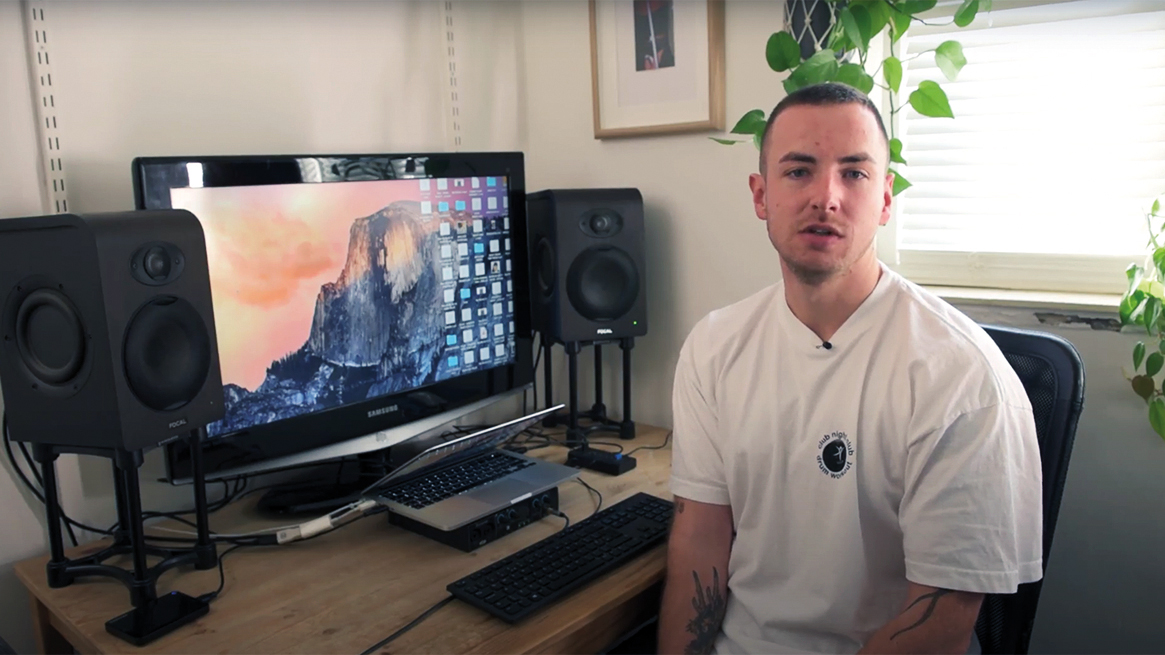
Step 1: The seemingly ever-rising tones in Ploy’s track Garys provide masses of energy, which works great on the dancefloor. Although effective, it’s a fairly simple technique. “It’s quite easy really,” he tells us.
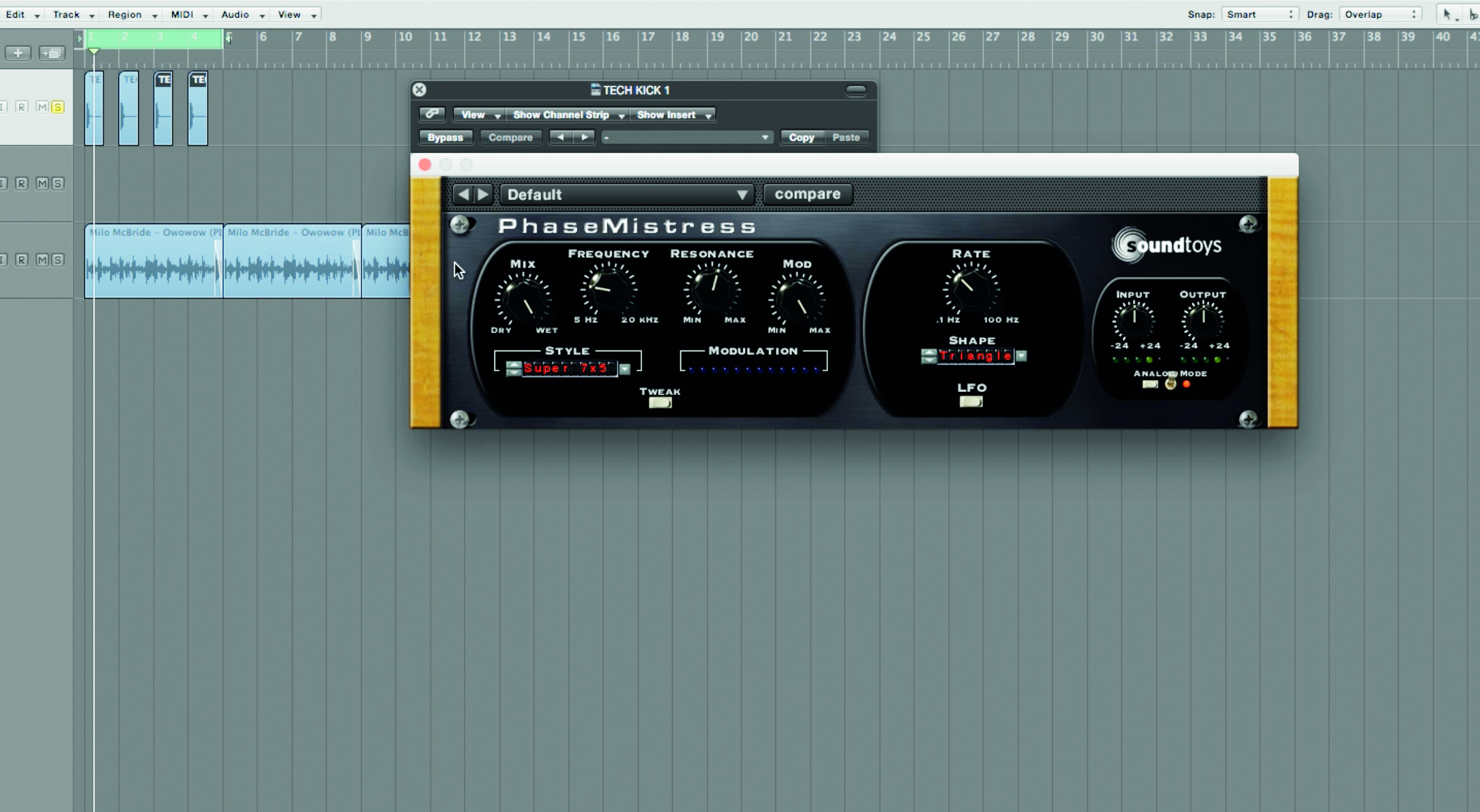
Step 2: “I use the PhasedMistress plugin which is part of the Soundtoys pack,” he explains. “But you can do this with anything that lets you play with resonance and the frequency of that resonance, which is what’s being automated to make the pitch shift.”
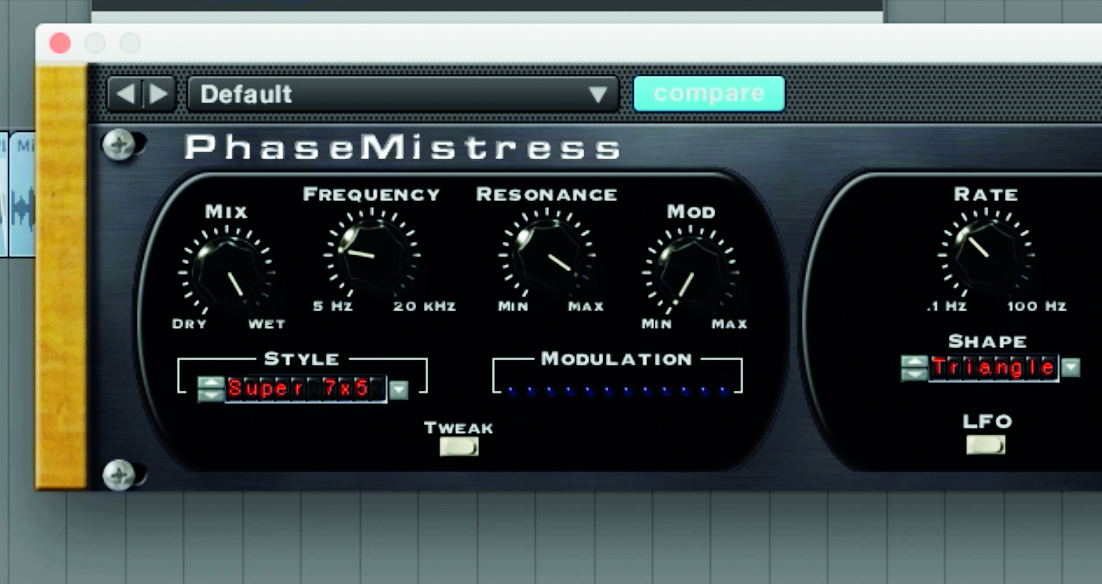
Step 3: Sam turns the resonance up to full, to create a self-oscillating feedback tone, and removes any modulation. “You can trigger the sound with anything,” he explains, “but I tend to use a kick drum.”
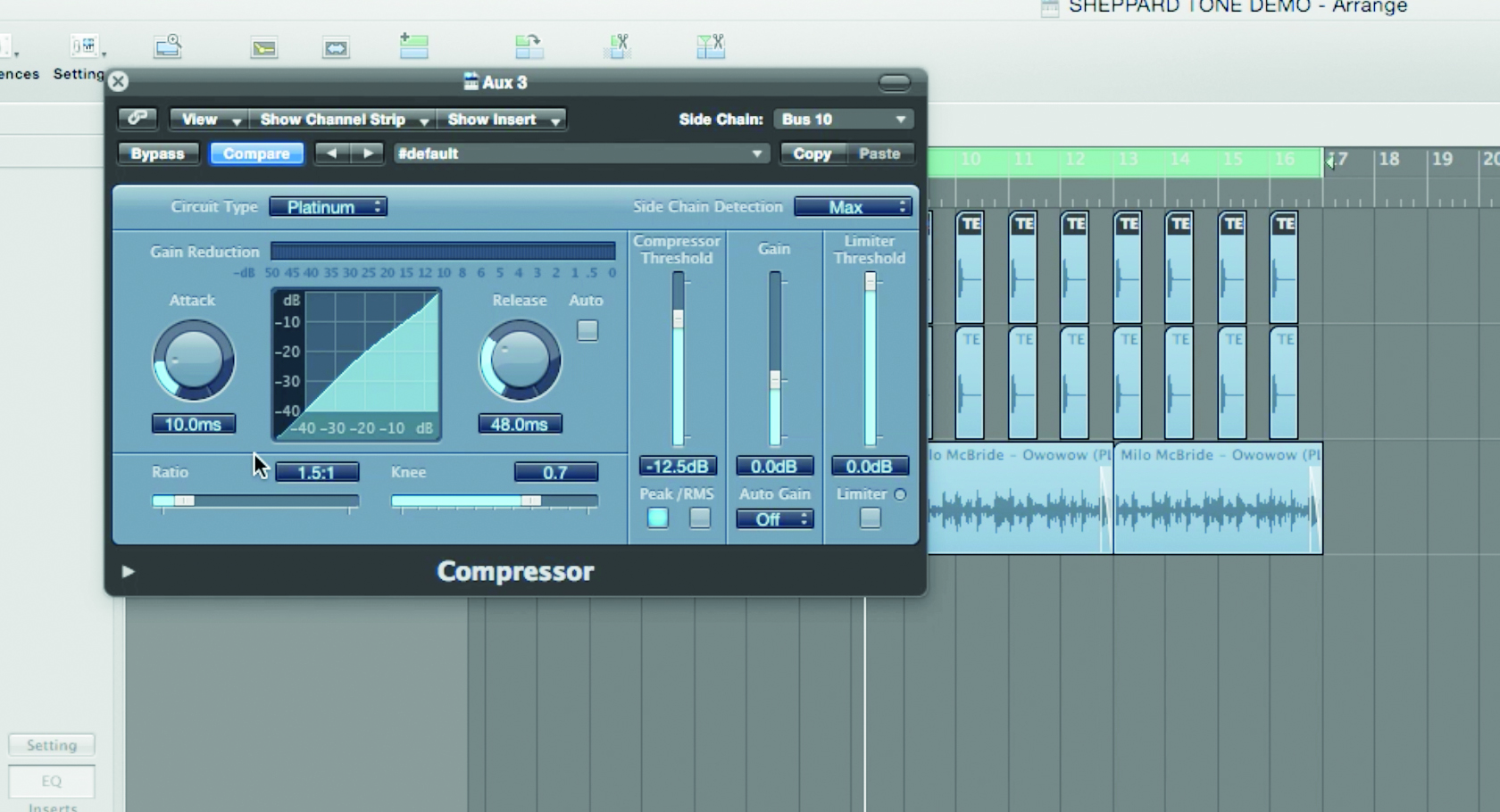
Step 4: This creates a constant static tone. Sam uses a little EQ to tame this, and a compressor sidechained to a kick to add movement. “If you want some of the original trigger sound you can adjust the wet/dry but for me I just wanted the tone completely by itself.”
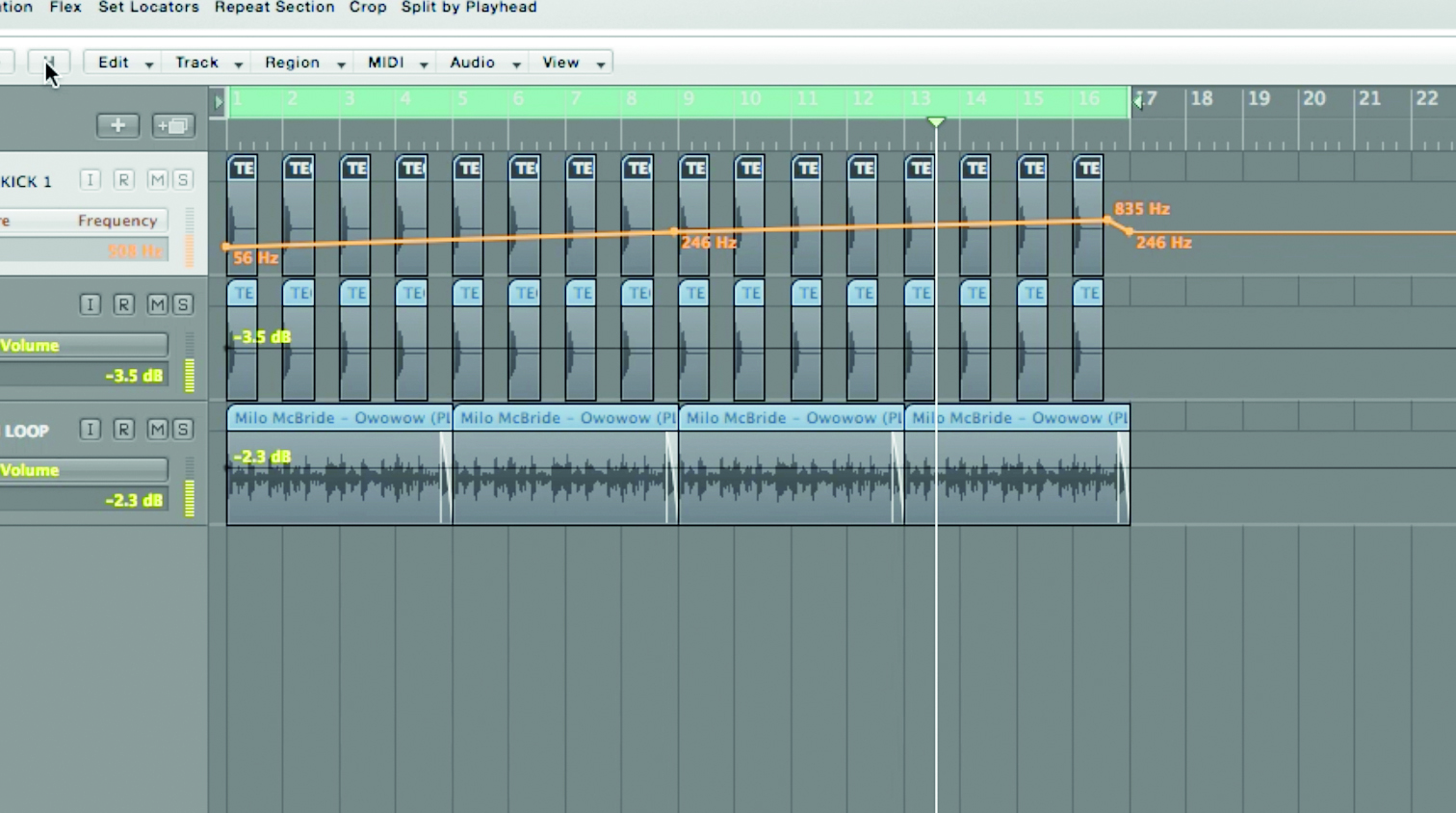
Step 5: The sound comes to life when Sam starts automating the pitch of the resonance. He draws in upward modulation curves which creates the propulsive effect used in Garys.
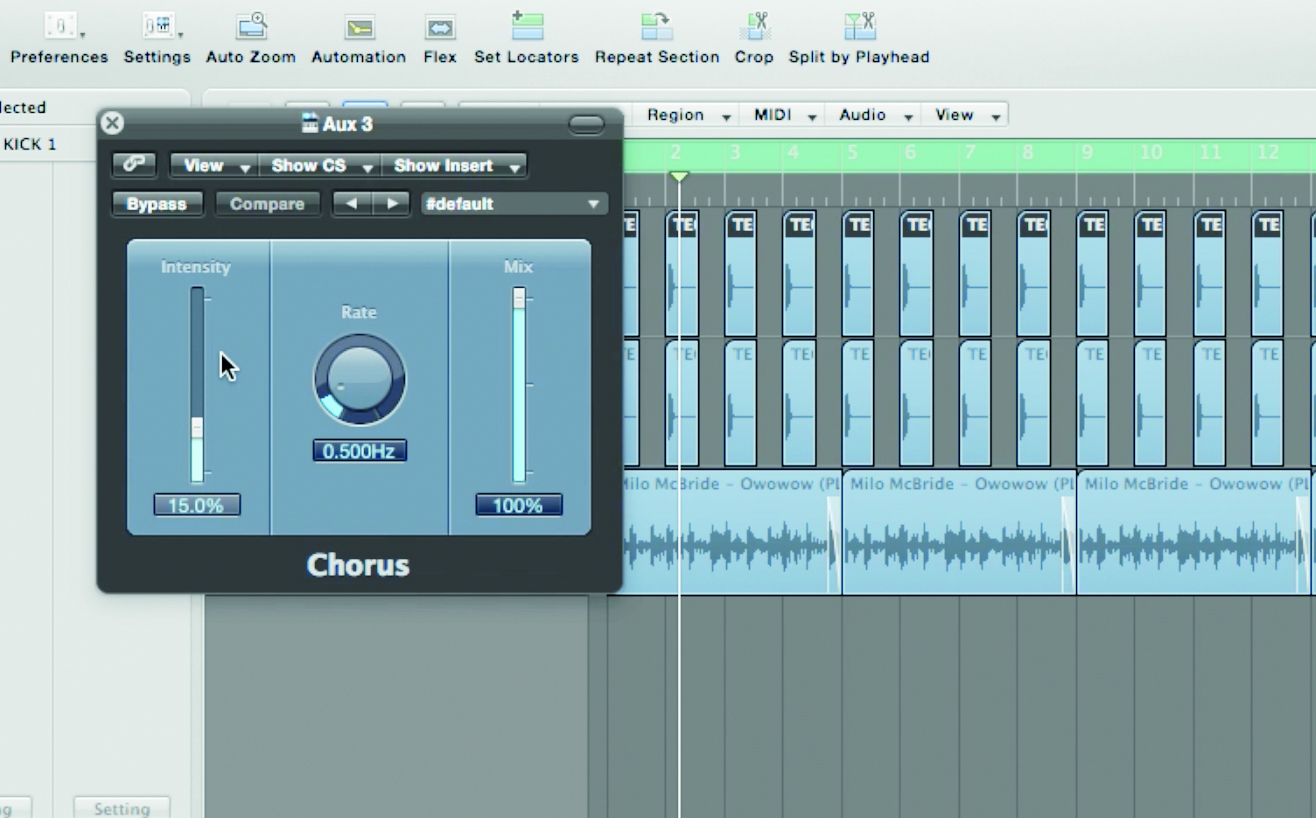
Step 6: He finishes the sound off with a touch of chorus and some more EQ tweaks. “It’s quite an effective way of increasing tension,” Sam explains. “You can use it in small amounts, although my idea was to have it rising through the entire tune.”


Future Music is the number one magazine for today's producers. Packed with technique and technology we'll help you make great new music. All-access artist interviews, in-depth gear reviews, essential production tutorials and much more. Every marvellous monthly edition features reliable reviews of the latest and greatest hardware and software technology and techniques, unparalleled advice, in-depth interviews, sensational free samples and so much more to improve the experience and outcome of your music-making.
“Excels at unique modulated timbres, atonal drones and microtonal sequences that reinvent themselves each time you dare to touch the synth”: Soma Laboratories Lyra-4 review
“A superb-sounding and well thought-out pro-end keyboard”: Roland V-Stage 88 & 76-note keyboards review




![PRS Archon Classic and Mark Tremonti MT 15 v2: the newly redesigned tube amps offer a host of new features and tones, with the Alter Bridge guitarist's new lunchbox head [right] featuring the Overdrive channel from his MT 100 head, and there's a half-power switch, too.](https://cdn.mos.cms.futurecdn.net/FD37q5pRLCQDhCpT8y94Zi.jpg)





